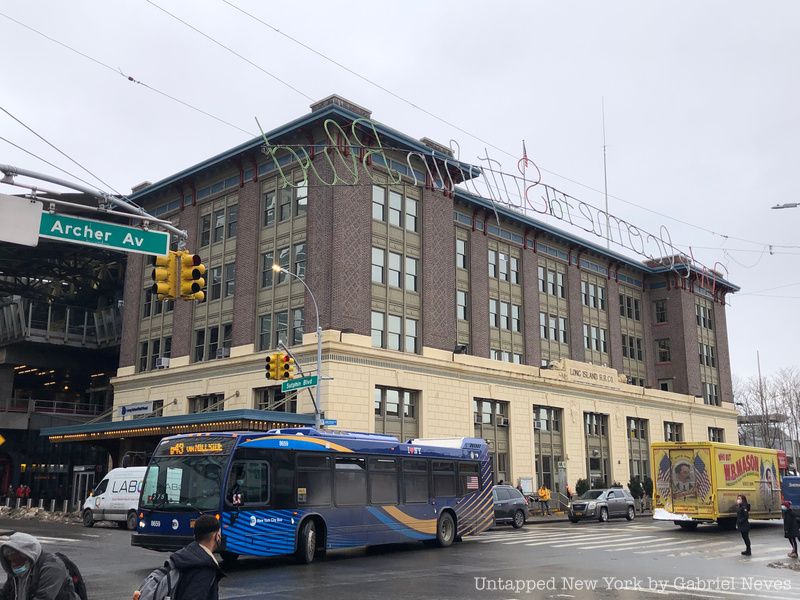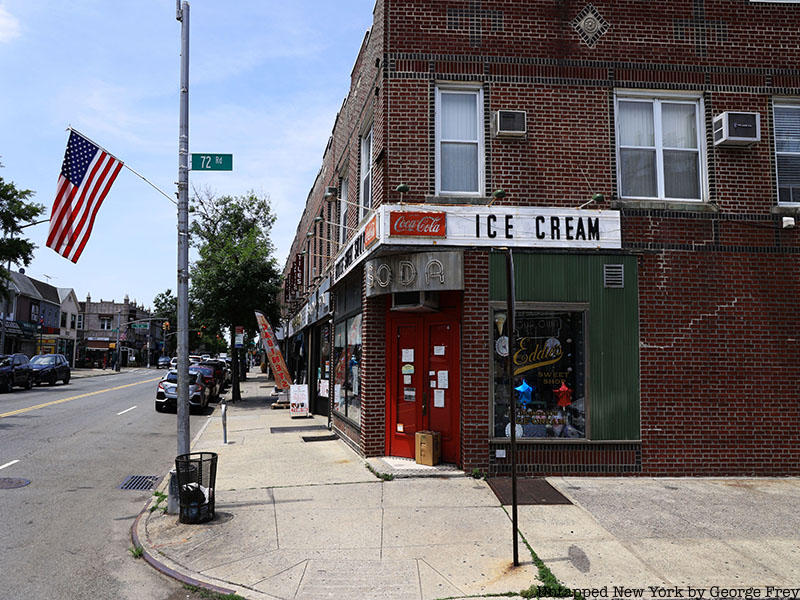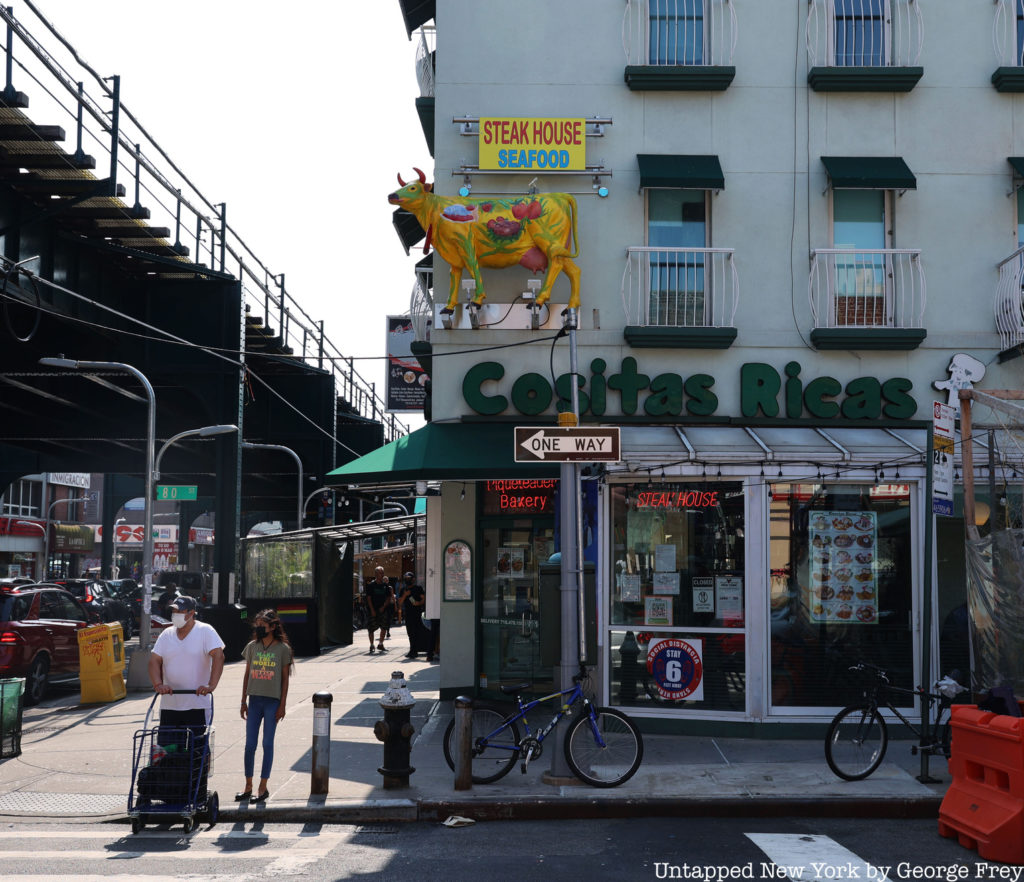Riding the Line: Queens

After departing Jamaica Center, the E makes another 21 stops before arriving at its destination in the Financial District. Despite running over 20 miles of track, the train manages to link the two terminals in just a little over an hour. The route passes through a number of neighborhoods in Queens with a high population of working-class citizens, such as Jackson Heights, Jamaica, Rego Park, and Elmhurst. The E also offers a connection to JFK Airport’s AirTrain system and is a popular choice of travel for commuters coming from the city.
The first stop right after Jamaica Center-Parsons Archer is the Sutphin-Boulevard-JFK Airport station, which does offer that connection to the international airport. The route then makes a turn heading alongside the above-ground Van Wyck Expressway, making stops on the outskirts of Richmond Hill and Briarwood, Both the Jamaica-Van Wyck and Briarwood stops feature the least ridership on the entire line because they don’t directly pass through each of these neighborhoods. Richmond Hill is home to a large percentage of Caribbean Americans and South Asian Americans, while Briarwood is a diverse middle-class community that features some colonial and old-English style residences.
Kew Gardens-Union Turnpike, 75th Avenue, and Forest Hills-71st Avenue are the next trio of stops along the line. The neighborhood of Kew Gardens is one of the seven planned garden communities built in the borough of Queens before the 1950s. The area features a range of social classes and is well regarded for its commercial center along Lefferts Boulevard, where businesses such as Austin’s Ale House, the Village Diner, and Dani’s Pizzeria have been serving residents for years.

Forest Hills and its subway hub on 71st Avenue rank as one of the most important stops along the E line. The station offers transfers to the F, M, and R trains, with the M and R terminating at that station. The neighborhood itself features plenty of historical sites, including some pre-war churches, a Long Island Rail Road station that is one of the oldest commuter rail terminals in New York, and some beautiful neighborhood architecture along Austin Street. Forest Hills used to be the original site of the U.S. Open Tennis competition before it was moved to the Billie Jean King National Tennis Center in Flushing Meadows-Corona Park.
On its local schedule, the next stops on the E train pass through Rego Park and Elmhurst before reaching its next express stop on Roosevelt Avenue in Jackson Heights. Both Rego Park and Elmhurst feature a high Asian and Hispanic/Latino population, as well as a notable Bukharan Jewish community. The rapidly developing markets in these neighborhoods, particularly in Elmhurst, have attracted plenty of business and have made them centers for Chinese culture in the city.
Jackson Heights is where a bulk of the working-class commuters who take the E train come from, boasting an incredibly diverse mixture of cultures (and some amazing restaurants!). The Jackson Heights-Roosevelt Avenue station is a major transportation hub along the line due to its connections with the M, F, R, and 7 trains. It is also an important bus terminal for routes that shuttle passengers to different parts of Queens and the Q72 bus for passengers heading to LaGuardia Airport.

The next several stations have lower ridership and pass through the edges of main neighborhoods and industrial areas. The 65th Street, Northern Boulevard, and 46th Street stops pass through a section of Woodside that has a high concentration of Asian residents, especially those of Nepalese and Tibetan descent. Steinway Street connects E train riders to the lower section of Astoria, which is one of the most ethnically diverse neighborhoods in the entire city. The following station, 36th Street, is nestled alongside a number of old commercial buildings that are now used as office space or for small businesses.
The express stop at Queens Plaza and the station after it at Court Square are the last stops on the Queens side of the E line. The intense commercialization, gentrification, and increase in resident populations in Long Island City have boosted the usage of these two stations dramatically. The community used to be an entirely separate city, featuring its own community board and even holding elections to vote for their mayor.
For years after rejoining with the rest of New York, Long Island City was utilized mainly for industry and production. Factories, rail yards, and scrap yards were scattered all over until the early 2000s, when the city decided to rezone the land. With demand for real estate growing by the year and space in Manhattan becoming less available, large apartment buildings and residential communities began popping up. Sites such as the Pepsi-Cola sign, Gantry State Park, and the Long Island City Court House Complex offer an interesting blend of history and renovation.





